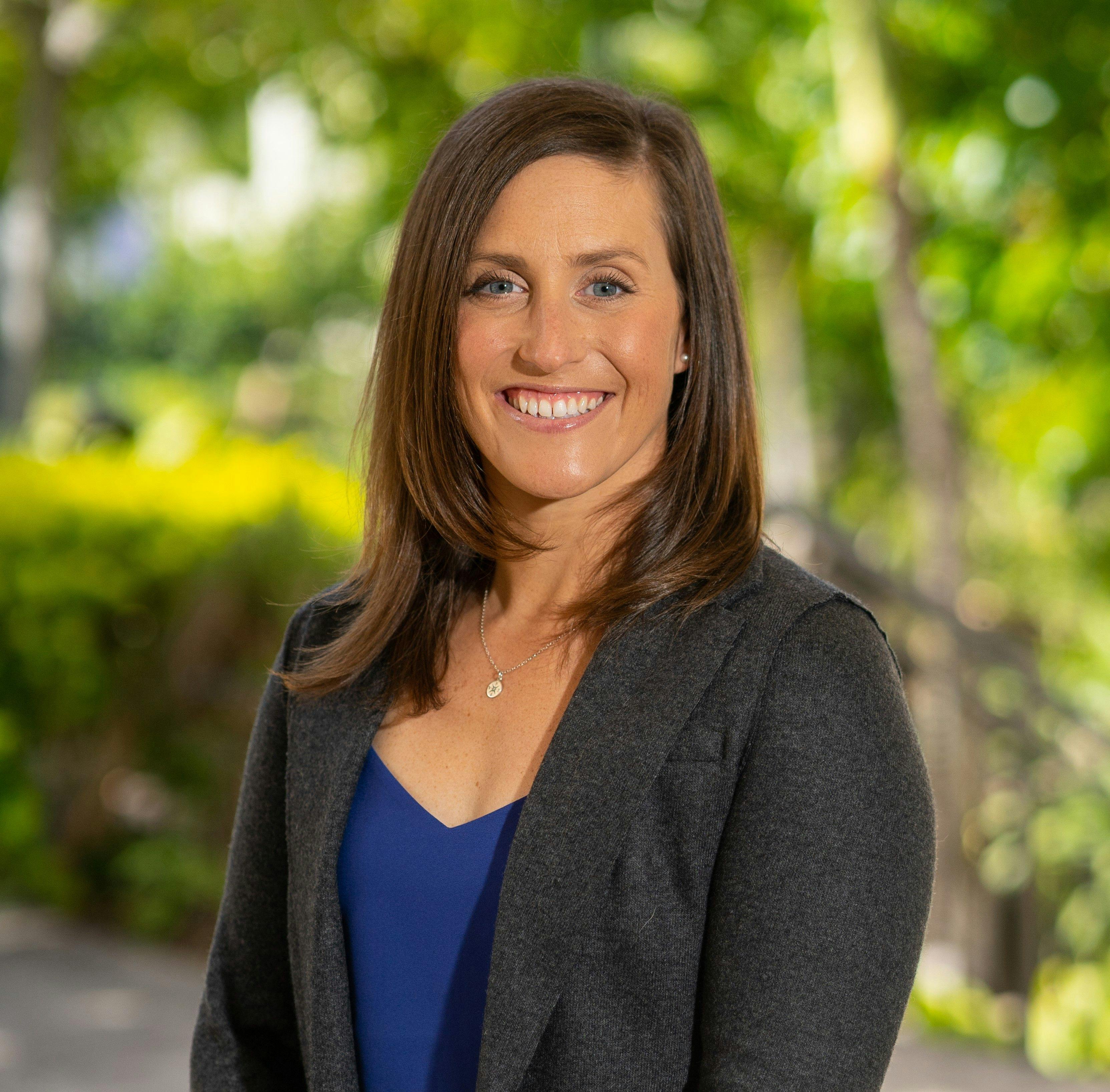Investigating PFAS in Plastic Food Storage Bags Using LC–MS/MS
Yelena Sapozhnikova from the United States Department of Agriculture (USDA) spoke to The Column about her innovative research investigating PFAS in plastic food storage bags using targeted and non targeted liquid chromatography–tandem mass spectrometry (LC–MS/MS). Rigorous QA–QC procedures were implemented to overcome challenges associated with background contamination and interferences.
Sous-vide cooked technology concept. Vacuum fillet of fresh atlantic snow white fish on wooden board with rosemary and pepper, top view on pink background with copy space | Image Credit: © cendece (Generated with AI) - stock.adobe.com

Q: Why are you investigating PFAS in plastic food storage bags and where did you source the samples from?
A: In 2022 in collaboration with our academic partners from the University of Pittsburgh, we conducted a pilot seafood study to test seafood from the US market for PFAS chemicals (1). One unexpected discovery was finding that homogenized fish samples stored in plastic food storage bags for an extended period of time (~3 months) became contaminated with perfluorobutane sulfonate (PFBS) by transfer from plastic bags. We confirmed our findings by analyzing the intact storage bags and fish stored in the original packaging. PFBS is a short-chain (four carbons, C4), fully fluorinated PFAS used as a replacement for banned longer chain toxic PFAS like perfluorooctanoate (PFOA) and perfluorooctane sulfonate (PFOS). According to the Food Packaging Forum, PFBS is used in food contact materials (FCMs) “such as silicones and printing inks” (2). In 2020, PFBS and its salts were recognized as substances of very high concern by the European Chemicals Agency (ECHA) (3). In 2021, the U.S. Environmental Protection Agency (EPA) assessed PFBS toxicity, and set reference doses for PFBS chronic exposure and sub-chronic exposure (4). Similar to our findings in this study, PFBS has been found in fast food packaging in the US in 2017, and most recently, in fast food packaging in France, where it was measured in 97% of the tested samples (5,6). This information along with our findings of PFBS in storage bags prompted us to test more consumer plastic food storage bags from different vendors mostly because these storage bags are commonly used in households, food preparation and service establishments. We collected plastic storage bags from different vendors representing brand names, local store brands and brands acquired from online retailers. The bag variety included sandwich bags, zipper seal bags, freezer zipper bags, slider storage bags, and snack size bags. We also tested four laboratory grade plastic bags from different vendors (7).
Q: Can you describe the sample preparation process that you used in this investigation?
A: We attempted to achieve a wide analytical scope by using several approaches including:
- Sample extraction to answer questions–what PFAS are present and at what levels;
- Total oxidizable precursor (TOP) assay, which uses oxidation to transform PFAS precursors into their terminal degradation products. This technique helps us to estimate levels (but not identity) of PFAS precursors in the samples;
- Migration tests conducted with food samples.
These tests were conducted under controlled regulated conditions in accordance with U.S. Food and Drug Administration (FDA) recommendations, and provide a more realistic picture of which PFAS migrate, and at what levels (8). We selected four different food simulants to mimic the properties of various foods that can be stored in plastic bags: 10% ethanol/water for aqueous and acidic foods, 50% ethanol/water for low- and high-alcoholic foods, 95% ethanol/water for fatty foods, and 3% acetic acid in water for highly acidic food.
Q: Samples were analysed using both targeted and non-targeted liquid chromatography–tandem mass spectrometry (LC–MS/MS). Why did you select both techniques and what results did you obtain from each method? What were your main findings?
A: We used targeted analysis with LC–MS/MS triple-quadrupole mass spectrometer, for 35 PFAS analytes to detect and measure their levels in extracted food samples, migration extracts, and also to measure terminal degradation products of the TOP assay.
In extracted samples, we found only two PFAS analytes, PFBS and 6:2 fluorotelomer phosphate diester (6:2 diPAP), in 8 bags out of 14 tested. 6:2 diPAP was found in half of the bags purchased from big box and local grocery stores at levels ranging from 0.6– 9.7 ng/g. Perfluoroalkyl phosphates (PAPs) are used in mixtures for oil and grease resistance in FCMs and can be precursors to perfluoroalkyl carboxylates (9). Similar to our findings, 6:2 diPAP was recently found to be the most commonly detected PFAS in a wide range of FCMs including samples of fast food packaging from France, paper and board packaging materials from Spain, and also in cosmetics and personal care products (6,10,11). Our previous study on FCMs also showed that 6:2 diPAP was present in many samples sourced from around the world (12).
One interesting observation we made was that methanolic extracts of these two bags containing PFBS had pretty pink and violet pigmentation which was not present in any other bags tested in this study. PFBS has been known to be used in printing inks for FCMs. While the source of PFBS in plastic food storage bags is unknown, its presence is consistent with electrochemical fluorination manufacturing processes. While not as prevalent in recent FCM studies as 6:2 diPAP, PFBS has been measured primarily in fast food packaging in both France and the USA (5,6,12). Perhaps unsurprisingly, there were no PFAS detected in all laboratory grade bag samples which were tested in this study.
The results from TOP assay did not show an increase in levels of terminal degradation products, suggesting the lack of PFAS precursors in these samples.
For migration tests, we found that 6:2 diPAP did not migrate from the bags into food simulants; however, PFBS did migrate from the bag containing the high level (26.6 ng/g), and the migrated rates were from 22%–75% (or 5.9–20.0 ng/g) depending on the food simulant. This confirmed our findings of PFBS in the previous study when it migrated into fish samples during sample storage before the analysis.
When we applied suspect screening by non-targeted analysis, we found some PFAS features, but upon further investigation were not able to confirm them with MS2 structural information. This lack of detection, plus no detections of terminal PFAS products post-TOP assay, both suggest that outside of the two detected PFAS found in this study, there may not be many other PFAS within both consumer and laboratory grade plastic storage bags.
Q: What challenges did you encounter analysing PFAS using these methods and how did you overcome them?
A: There is no lack of challenges when testing for PFAS; every scientist working in the field will tell you that. First, these chemicals’ ubiquitous presence in many products creates troubles with background contamination. We had to use solvents and consumables of the highest quality, and sometimes even that does not guarantee they are PFAS-free. The other challenge is when using targeted analysis with a triple-quadrupole mass spectrometer in unit resolution, some interferences can mimic some PFAS transitions, and either high-resolution MS or additional sample cleanup is required for confirmation. We run extensive quality assurance and quality control (QA–QC) with every batch of samples we analyze to check for background contamination, we include laboratory and reagent blanks, instrument and solvent blanks, test samples in replicates to test for reproducibility, test recoveries with fortified samples—these are the strategies helping us to deal with challenges.
Q: You also published results investigating PFAS in globally sourced food packaging; what analytical techniques did you use for this study and what were your main findings?
A: We used the same analytical techniques in our previous study, but our results were very different. For example, we found 19 PFAS in extracted samples of consumer food packaging we tested, and 84% of samples contained at least one PFAS chemical. Another interesting finding was that the sum of terminal products after TOP assay was over 10 times greater compared to pre-TOP analysis, suggesting the presence of unaccounted PFAS precursors in these samples which are missed during the targeted analysis, and that non-targeted analysis is needed to identify and characterize these chemicals. In fact, in the following study applying non-targeted analysis with high- resolution mass spectrometry (HRMS), we were able to identify and confirm with analytical standards some PFAS contributing to these high TOP levels. We also conducted migration tests and found four PFAS, perfluorohexanoic acid (PFHxA), perfluoroheptanoic acid (PFHpA), perfluorohexanesulphonic acid (PFHxS) and 6:2 diPAP migrating into food simulants at 0.04–12 ng/g levels.
Q: Is your group planning to investigate PFAS in other food matrices?
A: Yes, we have done studies on method development for PFAS in food matrices. We have developed and validated a method for analysis of 34 PFAS in USDA Food Safety Inspection Service (FSIS) regulated foods: beef, chicken, pork, catfish, and liquid and powered eggs (13). We have applied this method for testing seafood in our pilot study I mentioned earlier, the one where we observed migration of PFBS from plastic bags, and which was the inspiration for this study. We are currently expanding our targeted PFAS method to include more analytes with commercially available analytical standards. To widen analytical scope even more, we are developing methods for GC-amenable PFAS, so please stay tuned.
References
(1) Bedi, M; Sapozhnikova, Y.; Taylor, R. B.; Ng, C. Per- and Polyfluoroalkyl Substances (PFAS) Measured in Seafood from a Cross-Section of Retail Stores in the United States. J. Hazard.
Mater. 2023, 459, 132062. DOI: 10.1016/j.jhazmat.2023.132062
(2) Srebny, V. US EPA Reissues PFBS Risk
Assessment. Food Packaging Forum, April 13, 2021. https://www.foodpackagingforum.org/news/us-epa-reissues-pfbs-risk-assessment (accessed 2024-04-16)
(3) European Chemicals Agency (ECHA), European
Union. Inclusion of Substances of Very High Concern in the Candidate List for Eventual Inclusion in Annex XIV (Decision of the European Chemicals Agency), 01.2020, last revised December 2023. https://echa.europa.eu/documents/10162/ba42270a-93fe-7cde-6d41-7f7af4e00e66 (accessed 2024-04-16)
(4) United States Environmental Protection Agency (US EPA). Human Health Toxicity Values for Perfluorobutane Sulfonic Acid and Related Compound Potassium Perfluorobutane Sulfonate, 04.2021. https://cfpub.epa.gov/ncea/risk/recordisplay.cfm?deid=350888 (accessed 2024-04-16)
(5) Schaider, L. A.; Balan, S. A.; Blum, A.; et al. Fluorinated Compounds in U.S. Fast Food Packaging. Environ. Sci. Technol. Lett. 2017, 4 (3), 105–111. DOI: 10.1021/acs.estlett.6b00435
(6) Dueñas-Mas, M. J.; Ballesteros-Gómez, A.; de Boer, J. Determination of Several PFAS Groups in Food Packaging Material from Fast-Food Restaurants in France. Chemosphere 2023, 339, 139734. DOI: 10.1016/j.chemosphere.2023.139734
(7) Stroski, K. M.; Sapozhnikova, Y. Analysis of Per- and Polyfluoroalkyl Substances in Plastic Food Storage Bags by Different Analytical Approaches. J. Chromatogr. Open 2023, 4, 100106. DOI: 10.1016/j.jcoa.2023.100106
(8) Center for Food Safety and Applied Nutrition, Office of Food Additive Safety, United States Food and Drug Administration (US FDA). Guidance for Industry: Preparation of Premarket Submissions for Food Contact Substances (Chemistry Recommendations), 12.2007. https://www.fda.gov/regulatory-information/search-fda-guidance-documents/guidance-industry-preparation-premarket-submissions-food-contact-substances-chemistry (accessed 2024-04-16)
(9) Gebbink, W. A.; Ullah, S.; Sandblom, O.; Berger, U. Polyfluoroalkyl Phosphate Esters and Perfluoroalkyl Carboxylic Acids in Target Food Samples and Packaging—Method Development and Screening. Environ. Sci. Pollut. Res. 2013, 20, 7949–7958. DOI: 10.1007/s11356-013-1596-y
(10) Zabaleta, I.; Blanco-Zubiaguirre, L.; Baharli, E. N.; et al. Occurrence of Per- and Polyfluorinated Compounds in Paper and Board Packaging Materials and Migration to Food Simulants and Foodstuffs. Food Chem. 2020, 321, 126746. DOI: 10.1016/j.foodchem.2020.126746
(11) Harris, K. J.; Munoz, G.; Woo, V.; Sauvé, S.; Rand, A. A. Targeted and Suspect Screening of Per- and Polyfluoroalkyl Substances in Cosmetics and Personal Care Products. Environ. Sci. Technol. 2022, 56 (20), 14594–14604. DOI: 10.1021/acs.est.2c02660
(12) Sapozhnikova, Y.; Taylor, R. B.; Bedi, M.; Ng, C. Assessing Per- and Polyfluoroalkyl Substances in Globally Sourced Food Packaging. Chemosphere 2023, 337, 139381. DOI: 10.1016/j.chemosphere.2023.139381
(13) Taylor, R. B.; Sapozhnikova, Y. Comparison and Validation of the QuEChERSER Mega-Method for Determination of Per- and Polyfluoroalkyl Substances in Foods by Liquid Chromatography with High-Resolution and Triple Quadrupole Mass Spectrometry. Anal. Chim. Acta 2022, 1230, 340400. DOI: 10.1016/j.aca.2022.340400
About the Interviewee
Yelena Sapozhnikova is a Research Chemist at the United States Department of Agriculture (USDA) in Wyndmoor, PA, USA. Her research focuses on the development of novel methods for the analysis of chemical contaminants in foods and food packaging to improve their analysis and enhance food safety. Direct correspondence to: yelena.sapozhnikova@usda.gov

Investigating 3D-Printable Stationary Phases in Liquid Chromatography
May 7th 20253D printing technology has potential in chromatography, but a major challenge is developing materials with both high porosity and robust mechanical properties. Recently, scientists compared the separation performances of eight different 3D printable stationary phases.
Analytical Challenges in Measuring Migration from Food Contact Materials
November 2nd 2015Food contact materials contain low molecular weight additives and processing aids which can migrate into foods leading to trace levels of contamination. Food safety is ensured through regulations, comprising compositional controls and migration limits, which present a significant analytical challenge to the food industry to ensure compliance and demonstrate due diligence. Of the various analytical approaches, LC-MS/MS has proved to be an essential tool in monitoring migration of target compounds into foods, and more sophisticated approaches such as LC-high resolution MS (Orbitrap) are being increasingly used for untargeted analysis to monitor non-intentionally added substances. This podcast will provide an overview to this area, illustrated with various applications showing current approaches being employed.
Characterizing Polyamides Using Reversed-Phase Liquid Chromatography
May 5th 2025Polyamides can be difficult to characterize, despite their use in various aspects of everyday life. Vrije Universiteit Amsterdam researchers hoped to address this using a reversed-phase liquid chromatography (RPLC)-based approach.

.png&w=3840&q=75)

.png&w=3840&q=75)



.png&w=3840&q=75)



.png&w=3840&q=75)













